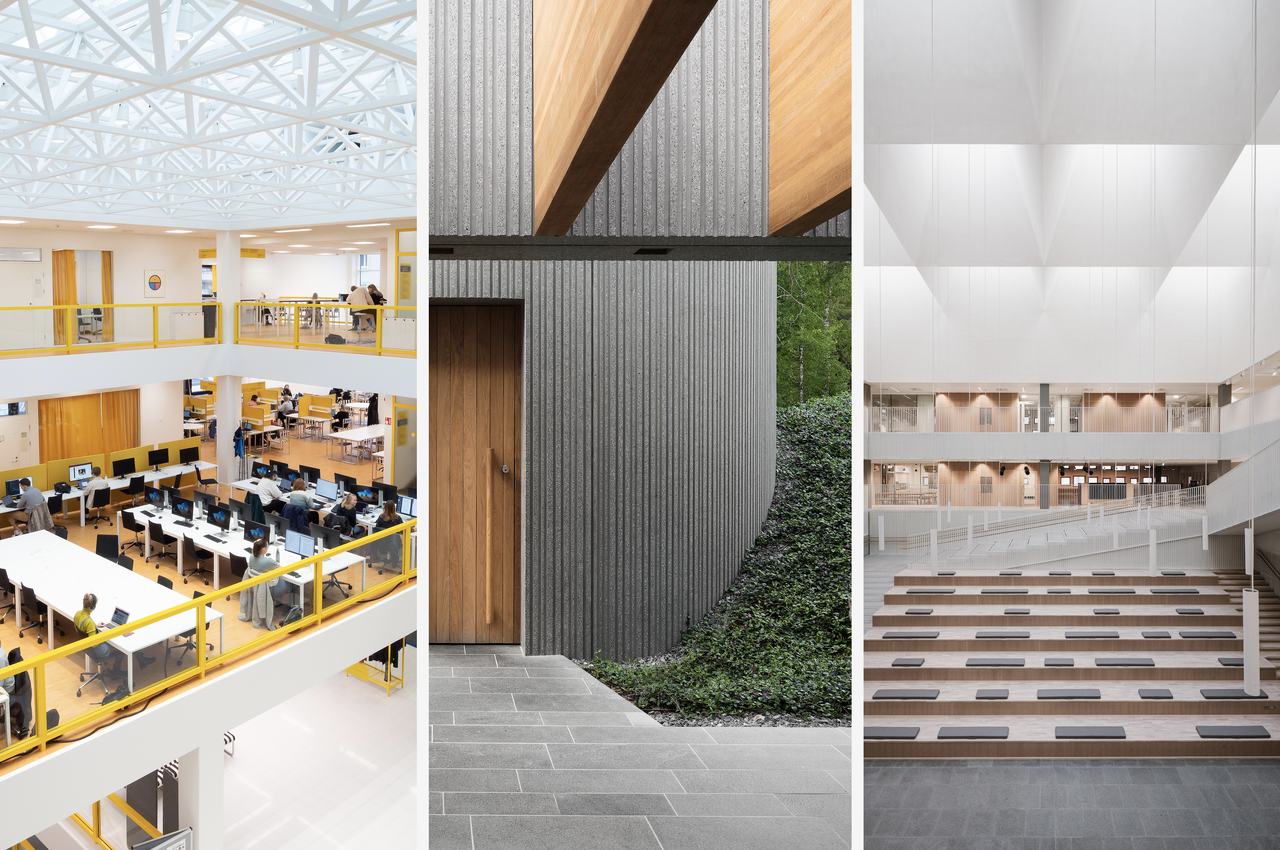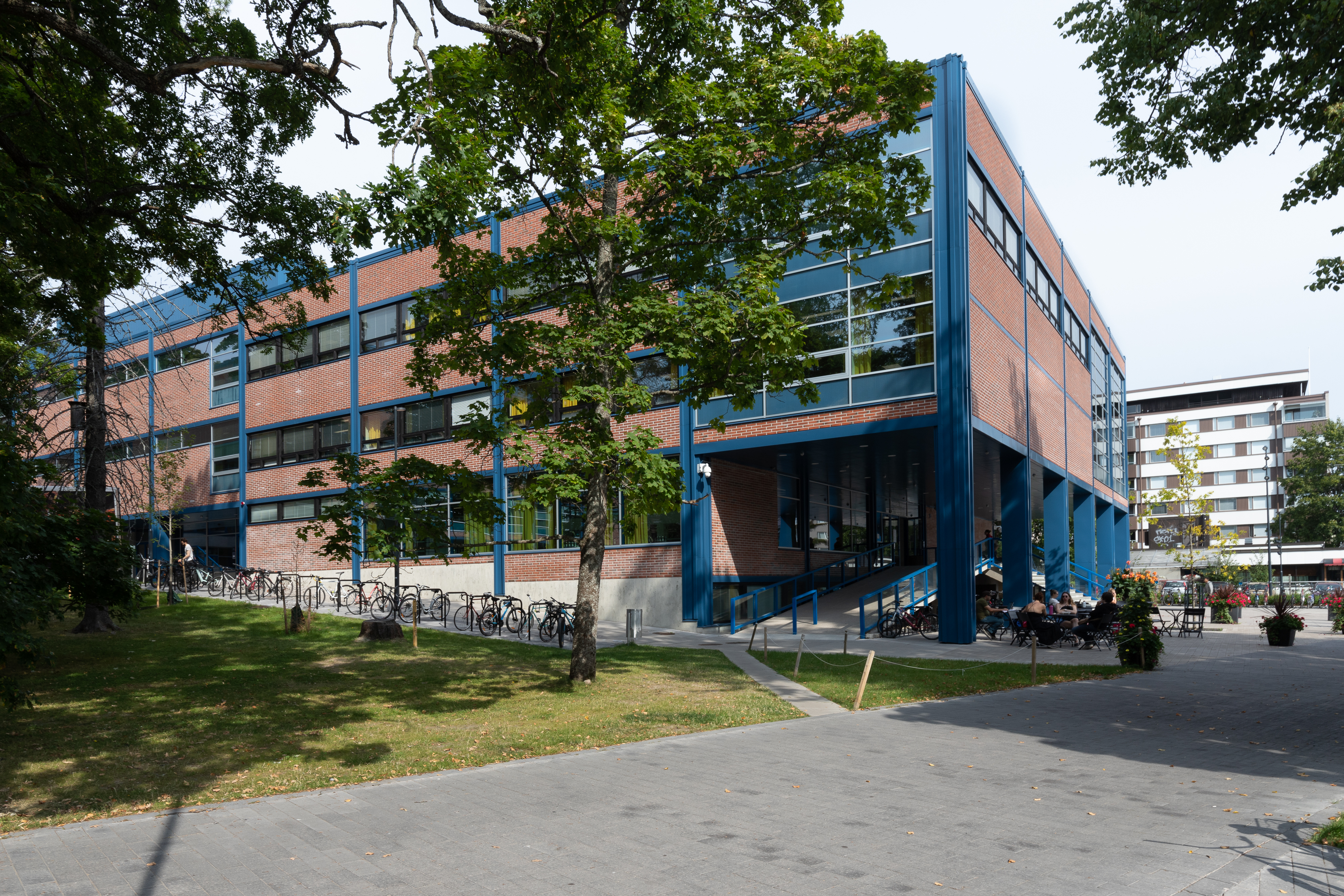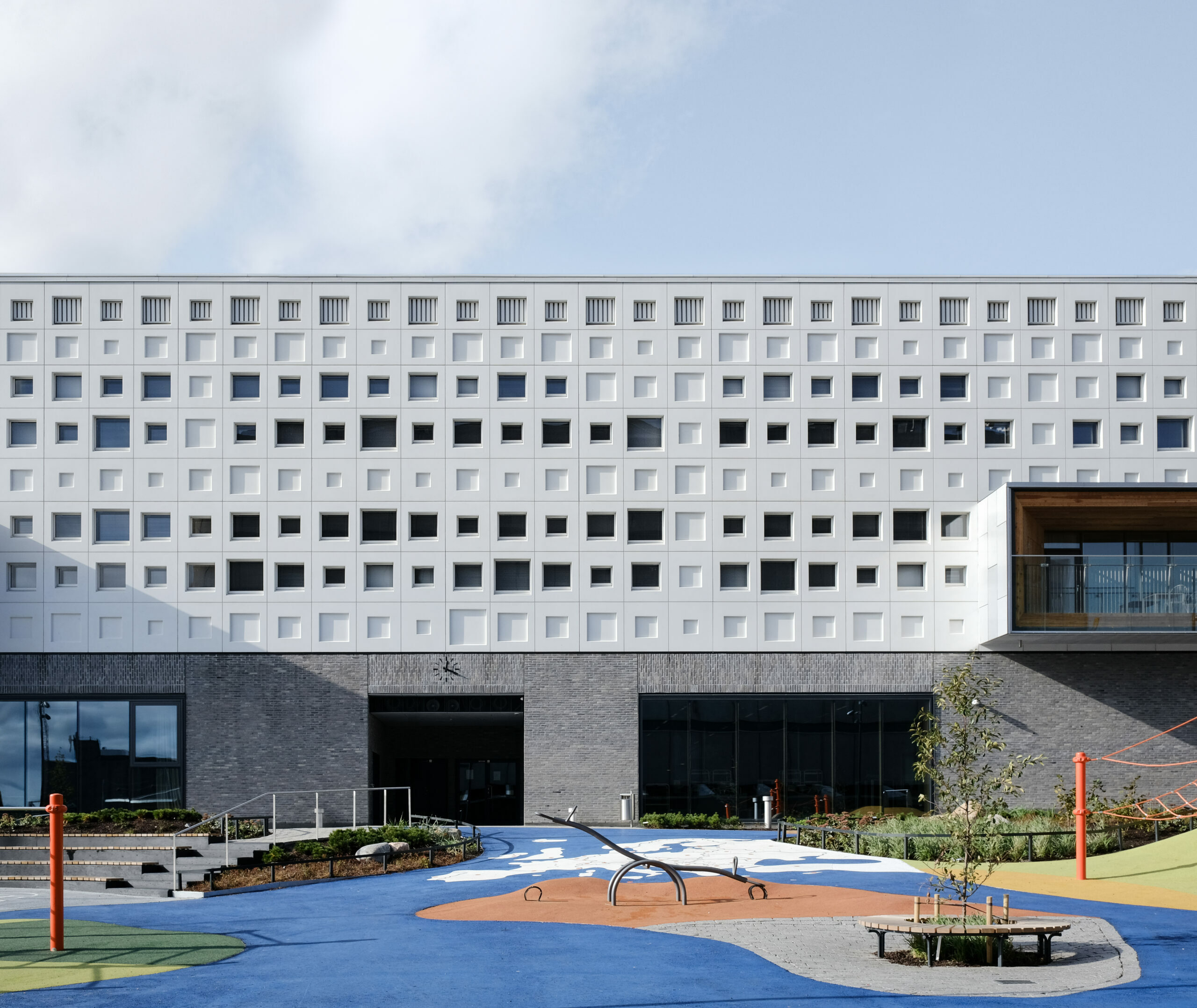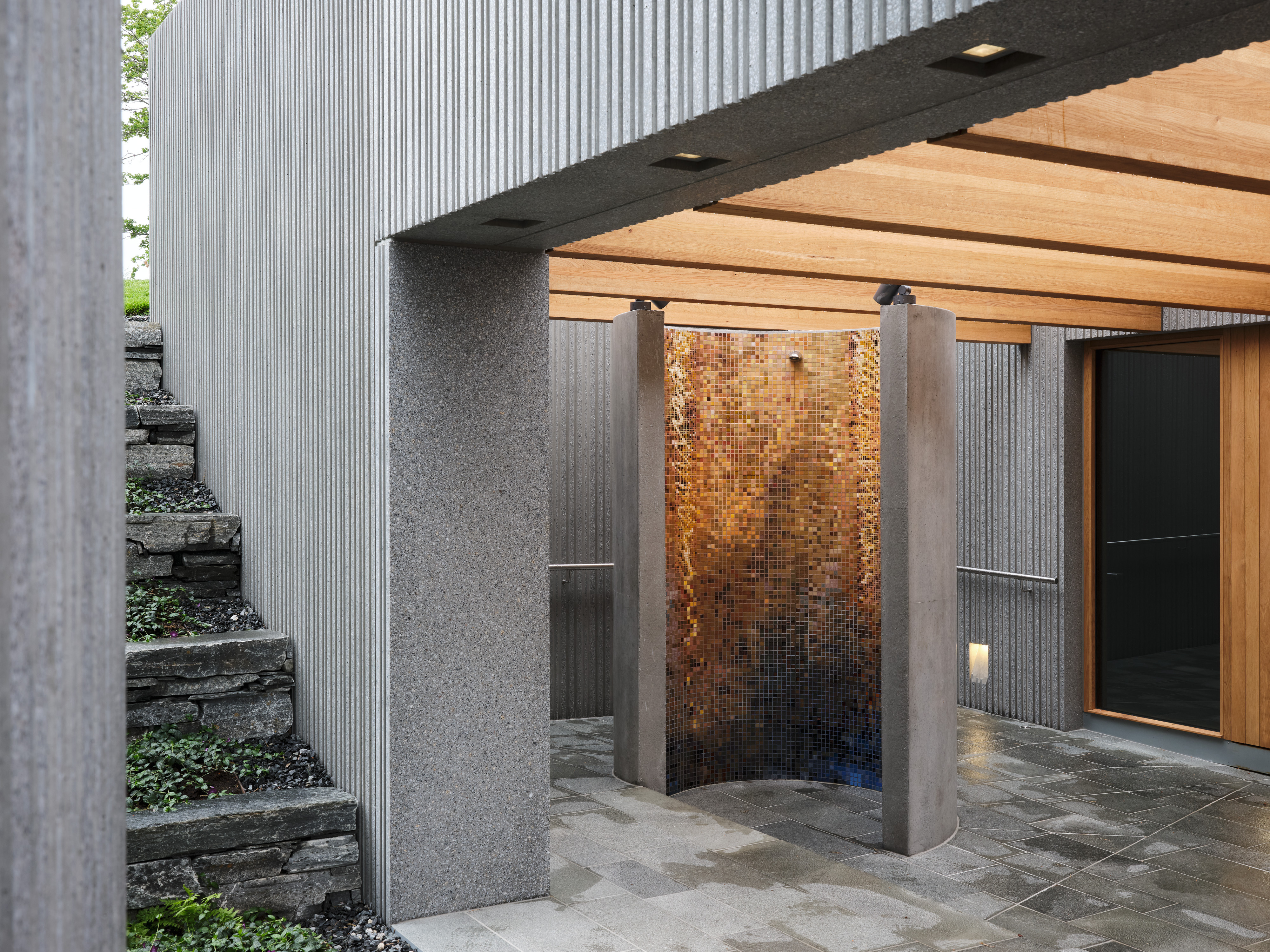Finlandia Prize for Architecture nominees reflect on the quality of life

Salla Hirvonen, Marc Goodwin, Pyry Kantonen
This year’s Finlandia Prize for Architecture nominees include three functional buildings: a library, a school and a sauna. This is the ninth time that the Finnish Association of Architects awards the Prize. The winner will be announced on 3 October 2022, on the World Architecture Day.
This year’s Finlandia Architecture Prize nominees include three functional buildings: a library, a school and a sauna. This is the ninth time that the Finnish Association of Architects (SAFA) awards the Finlandia Prize for Architecture. The winner will be announced on 3 October 2022.
The recipient of the Finlandia Prize for Architecture is chosen each year by an influential public figure who is a recognised expert in an area other than architecture. This year, the winner will be selected by Klaus Härö, one of the most awarded Finnish filmmakers of all time. This autumn will see the launch of his latest feature, a Finnish-Irish co-production titled My Sailor, My Love.
Shortlisted candidates share “an unstinting commitment to quality and a thoughtful and intelligent approach to architecture”
The Finlandia Prize for Architecture shortlist is chosen by a pre-selection jury appointed each year by SAFA.
Professor Panu Lehtovuori, chairman of the pre-jury, says the jury selected the top three unanimously. After two lockdown years, the panel was also able to visit schools, nurseries, hospitals and care homes.
What all three shortlisted candidates share, is a remarkably thoughtful and intelligent approach to architecture, along with an unstinting commitment to quality, he said. “The three projects we have chosen to shortlist this year speak powerfully to the importance of high-quality buildings for science, education, and learning, while also reminding us of architecture’s unique role, in a society that is growing increasingly abstract, in creating places that are welcoming and warm of heart.”
“We know how vitally important it is to preserve the values that underpin our built heritage. Currently, it is our 1970s building stock that finds itself under threat, and there is a need to highlight interventions that support their retention,” Lehtovuori added.
The Pre-selection Jury for 2022 comprised Professor Panu Lehtovuori, architect Sarlotta Narjus, architect Mona Schalin and Professor Rainer Mahlamäki. The secretariat was provided by Paula Huotelin, Secretary General of the Finnish Association of Architects.
Jyväskylä University’s Main Library, a masterpiece of 1970s public building design
Designed by architect Arto Sipinen in 1974, Jyväskylä University’s Main Library has now been refurbished by his son, Ari Sipinen (Arkkitehtitoimisto Sipinen). Affectionately known as “The Yellow Library”, the building re-opened a year ago under the new name of Lähde, a Finnish word meaning “spring” or “source”. At the time of its construction, the library garnered attention due to its architecture and functional design concept. The accessible collections and shared social spaces were new and novel at the time and drew extensive praise.
The purpose of the refurbishment project was to align the library to meet the university’s future needs while retaining the distinctive atmosphere in the entrance foyer and the original spatial concept and colour scheme. The most visible changes include the repurposing of the downstairs book repositories and their spatial amalgamation with the upper levels through the addition of new openings between the floors. The new entrance staircase now draws visitors towards the entrance foyer. Insofar as the column frame allows, large new windows have been added to the facade offering views towards the campus. The end result is a new and updated learning environment, as light-filled as it is approachable, that will help a sense of community to thrive here.

Jätkäsaari Comprehensive School: compact yet spacious, efficient yet airy
Built following an open architecture competition in 2019, Jätkäsaari Comprehensive School comprises a series of “home units”, where learning spaces, built around a central lobby, are designed to lend themselves to a variety of different educational purposes. It is the work of Erkko Aarti, Kuutti Halinen, Janne Kentala, Arto Ollila and Mikki Ristola (Aarti Ollila Ristola Arkkitehdit).
The building plays an important role in this brand new urban district that, for the time being, remains under development. With a sharply drawn, block-like presence, the building represents a fresh and exciting departure from the Finnish school-building idiom. The brick-clad ground floor gives the building a pleasant sense of rootedness, while the rest of the facade is executed in a lighter colour, linking the school with the built environment that surrounds it. The facade offers a brisk interplay between multiple window openings and unbroken frontage. The sophisticated use of light is further enhanced by the presence of lightwells. The architectural finishing touch here comes in the form of the school’s quirky and colourful playground.
At the heart of the building is the handsome, beautifully uplit central lobby. Clear sightlines connect the learning spaces and the central lobby, allowing users to orientate themselves easily. The spatial solution weaves together opportunities for different types of pedagogical provision. The school is compact yet spacious, efficient yet airy.

Art Sauna: a manifestation of Finland’s new and sociable sauna culture
Seeking a designer for their lakefront sauna, the Serlachius Museum in Mänttä-Vilppula chose to again engage the services of their Gösta Museum competition-winning Spanish trio of architects. Héctor Mendoza, Mara Partida and Boris Bezan (Mendoza-Partida Architectural Studio and BAX Studio) opted to join forces with Finnish architects Pekka Pakkanen and Anna Kontuniemi (Planetary Architecture), to deliver the sauna, which was completed this summer. Executed in concrete, the building is located to the front of the Gösta Museum at Lake Melasjärvi.
The choice of material is not the only act of defiance against our national sauna-building tradition; there is plenty here that will thrust Finnish visitors, and others steeped in our decidedly archaic and log-centric culture, on an expedition towards the unexpected. The end result is, above all, an experience, a journey that draws on the cultural hinterlands of its creators while treating visitors to wealth of other artworks along the path. The path brings you to the sauna, accessible through an outdoor space. The Art Sauna is unmistakeably a manifestation of Finland’s new sauna culture, where the tradition for calm and cleansing has been replaced by a pursuit for memorable experiences and socialising.

About the Finlandia Prize for Architecture
The Finlandia Prize for Architecture is awarded for the design or renovation design of an outstanding new building or building complex that has been completed within the past three years. The prize can be awarded either to a Finnish or foreign architect, or to an architectural firm for a project designed for a location in Finland; or to a Finnish architect or architectural firm for a project designed for a location abroad. The purpose of the prize is to promote the appreciation of high-quality architecture and to highlight the importance of architecture in generating cultural value and increasing well-being.
Read more about the Finlandia Prize for Architecture through this link
See the shortlist on Finnish Architecture Navigator through this link
The Finnish Association of Architects (SAFA) is a non-profit professional organisation engaged in active efforts to promote architecture and high-quality living environments. Established in 1892, SAFA has approximately 3,100 members, all of whom are architects with a university degree. Additionally, SAFA has around 600 student members.


